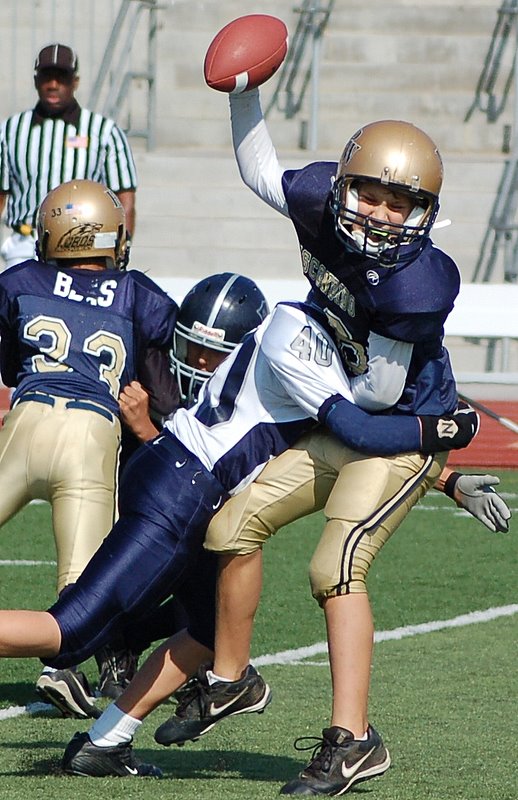In a decision that may ultimately have implications around the country, a workers’ compensation tribunal in Quebec has ruled that reducing injured workers’ income replacement benefits at age 65 offends both provincial and federal human rights legislation.
“It’s an important decision,” said Marianne Plamondon, a lawyer with Ogilvy Renault LLP in Montreal. “Our whole system in Canada is based on a recognized retirement age of 65. Income replacement laws require payments to stop or be reduced at this age.”
In Côté et Traverse Rivière-du-Loup St-Siméon, the Commission des lésions professionnelles (CLP) ruled that s. 56 of the Act respecting industrial accidents and occupational diseases discriminates against workers on the basis of age and is, therefore, contrary to s. 10 of the Quebec Charter of Human Rights and Freedoms and s. 15(1) of the Canadian Charter of Rights and Freedoms.
“Before the Côté decision, a few judgments had been rendered by the CLP on the same issue and the tribunal had always taken the opposite view,” said Christian Létourneau, a partner with Fraser Milner Casgrain LLP in Montreal.
In the current decision, the tribunal considered that s. 56 establishes a distinction based on age that is prohibited under Article 10 of the Quebec Charter, noted Jean-François Cloutier, a partner with Fasken Martineau DuMoulin LLP in Montreal. “This provision creates a distinction because workers over 64 or 65 years old do not receive a full compensation compared to other categories of workers, which in the view of the tribunal is contrary to the object of the Act.
“They also said this perpetuated the myth about older persons’ ability to work and this is discriminatory,” he noted.
At issue here was a 64-year-old worker who was injured on the job. According to existing law, his workers’ compensation payments are reduced by 25 per cent from the second year of the date of his disability, then by 50 per cent from the third year, and then 75 per cent from the fourth year. (For injured workers younger than 64, payments are reduced yearly by 25, 50 and 75 per cent beginning at age 65.)
The worker argued before the tribunal that this was discriminatory under s. 10 of the provincial human rights legislation, despite the fact that the income replacement benefit reduction was enshrined in law elsewhere.
“The tribunal concluded that s. 56 violated s. 10 even though s. 56 was a prohibition by law,” said Cloutier.
The Quebec attorney general had argued that the income-replacement benefit reduction was justifiable under s. 1. “There is case law that it may be discriminatory under s. 15, but justifiable under s. 1,” said Plamondon, who practises in all areas of employment and labour law.
“The tribunal found that there was not sufficient evidence to show that the old program was in danger of an explosion of costs,” she added. “This was surprising. The attorney general should have put forward the evidence on this.”
The attorney general did inform the tribunal that the average age of retirement in Quebec is just over 59 years, a fact he argued that made the income-replacement reduction provisions acceptable. The tribunal disagreed. “The attorney general raised the point the act is an acceptable compromise because it reflects the reality in the province,” Plamondon said.
As things currently stand, there is confusion. “Now there is contradictory jurisprudence,” said Cloutier. “We will see what will happen before the superior court.”
The decision has been sent for judicial review in Quebec’s Superior Court. The implications of this decision may reach beyond the province’s border to the rest of Canada. “We will be able to ascertain the real impact of the Coté decision when the superior court, or a higher court, renders a final decision,” said Létourneau.
That impact may extend beyond workers’ compensation. “There are other similar provisions in pension plans, for example, that eliminate benefits at a certain age,” noted Cloutier.
There is currently a case before the Supreme Court of Canada from B.C., he added, that is looking at pension plans and benefit reductions. The B.C. court found it was not discriminatory. The legal community is watching with interest what the Supreme Court will decide later this year. Now eyes are also turned to Quebec.
“It’s a new area,” said Cloutier.
BALLSTON SPA — A 34-year-old man from Victory was sentenced on Friday to serve 2 years in state prison for selling a narcotic pain medicine that was prescribed for his father’s cancer treatment.James Slingerland, of 51 Herkimer St., pleaded guilty to third-degree attempted criminal sale of a controlled substance on Aug. 31.
Slingerland stole the narcotic substance, Fentanyl, from his father, who was in the hospital at the time, said Saratoga County District Attorney James Murphy. Slingerland’s father has since died.
Fentanyl is a narcotic that is commonly prescribed in the form of a patch.
Slingerland sold the patches to Joshua P. Seidel, a 20-year-old Washington County man, who then resold the patches to several teenagers.
One of those teens, Greenwich High School junior Morgan Harrington, was found dead in his home in May 2009 after he chewed on the patch. The cause of death was determined to be acute Fentanyl intoxication, Murphy said.
Seidel pleaded guilty to a felony charge of criminal possession of a controlled substance in connection with the sale, and earlier this year was sentenced to serve 4 years in prison.
Slingerland was sentenced in Saratoga County Court Friday to serve 2 years in state prison and 1-1/2 years of post release supervision.
Regarding the single felony charge of attempted criminal sale of a controlled substance, Murphy said police and prosecutors were unable to find direct proof that Slingerland intended to cause the death of Harrington.

Location / Contact
Pappas Physical Medicine & Rehabilitation, PLLC
31-35 31st Street
Astoria, NY 11106
Map it
Call 1-800-949-6100 for an appointment or more information.
Pappas Physical Medicine & Rehabilitation, PLLC is a new practice in Astoria specializing in the non-surgical treatment of neck, back and extremity pain due to auto/work related trauma and sports injuries, as well as post-operative therapeutic management.

Location / Contact
Physical Medicine & Rehabilitation of NY, P.C.
Guatam Khakhar, M.D., FAAPMR
95-20 Queens Blvd.
Rego park, NY 11374
Call 1-800-949-6100 for an appointment or more information.
Physical Medicine & Rehabilitation of NY, P.C. is a practice in Rego Park specializing in the non-surgical treatment of neck, back and extremity pain due to auto/work related trauma and sports injuries, as well as post-operative therapeutic management.

OAK RIDGE, Tenn. —Sports injuries among young athletes are reaching epidemic proportions. Participation in sports is becoming more popular among American children. More children are choosing a sport at a very young age and most are playing sports year round. Children are not miniature adults, and all of this activity does not allow time for their bodies to rest.
Because they are still growing and developing, children are less coordinated and have slower reaction times than teens and adults. They also grow at different rates, which can result in small players competing against much larger players of the same age. The combination of these factors puts children at greater risk for musculoskeletal injuries.
Prevention
Parents can help prevent injuries by looking for signs that their children are overwhelmed, over-scheduled, and need a break. Coaches and other qualified adults must make sure that children wear the proper protective equipment for their sport. The equipment needs to meet the standards set by the National Operating Committee on Standards for Athletic Equipment. It is also important for parents to listen to their children. Does your child like the sport they are participating in? Children are more likely to become injured if they are not happy with the sport they are playing. If a child is not happy with their sport the child could be playing the sport improperly or not giving their best effort leading to a risk for injury.
Children should be supervised by properly trained adults and matched for a sport based on their size, skill level, and physical and emotional maturity. Young players should practice their sport, warm-up before and after playing a game, drink plenty of fluids when they are physically active, and take adequate rest breaks during practices and between games.
Overuse Injuries
Nearly every child who plays a sport has some risk of an overuse injury. The most common overuse injuries are soft tissue injuries including sprains, strains, and contusions. A sprain is a partial or complete tear of a ligament, which is a tough band of fibrous connective tissue that connects the ends of bones and stabilizes the joint. A strain is a partial or complete tear of a muscle or tendon. The most common sports injury, contusions (bruises), rarely causes a young athlete to be sidelined. Other sports related injuries are but are not limited to:
• Anterior knee pain: The pain associated with this injury occurs in the front of the knee under the kneecap and typically involves swelling because of inflammation of the tendon or cartilage. It is caused by muscle tightness in the major muscle groups around the thigh.
• Shin splints: Patients experience pain in the front and lower parts of their legs. This injury is often caused by repetitive running on a hard surface or over-training.
• Spondylolysis: Patients have lower back pain as the result of repetitive constant over stretching (hyperextension) of the spine. This condition is commonly seen in children who play football, weight lifting, gymnastics, or wrestling.
• Inflammation of the shoulder: Pain and swelling of the shoulder typically occurs because of repetitive stress from the overhead athletes such as baseball players or swimmers. Initially, the pain may come and go, but it may eventually become continuous.
• Little League elbow: Repetitive throwing can cause pain and tenderness in the elbow.
Overuse injuries may be aggravated by growth spurts, improper warmups, poor technique, participation in sports year-round, participation in several sports during a single season, or use of improper equipment.
Treatment
When an overuse injury is diagnosed, the goals of treatment are to control the pain, prevent complications, and promote healing of the injured area. The injured child may need rest, ice, compression and elevation of the affected area. After seeing their physician, the child may need to wear a splint or a cast, use crutches or a wheelchair, undergo physical therapy, or have surgery.
The objectives of physical therapy may include stretching and strengthening of the injured muscles, ligaments and tendons. Children often heal quickly, and it is important for them to follow the advice of their physician and physical therapist to prevent re-injury.
Re-injuries tend to occur when a patient returns to activity before a previous injury has healed. Not allowing the injured area to heal properly places stress on the area and causes the body to make up for the weakness elsewhere. What does all this mean? Your child is at higher risk for injuring another part of the body if the initial injury is not allowed to heal properly. In some cases, a child may be unable to return to a sport without risking re-injury. Returning to sports should be discussed with your physician and your physical therapist in detail in order to prevent further injuries.
As a parent of an athlete, following the above mentioned items can help prevent your child from becoming injured.
Kimberly Morgan, PT, DPT, is a physical therapist on the staff of Methodist Therapy, a service of Methodist Medical Center of Oak Ridge. Kimberly received her undergraduate degree from Austin Peay State University with a Bachelor of Science in Biology and a minor in Health and Human Performance. Kimberly received her Doctor of Physical Therapy degree from East Tennessee Sate University. She is a member of the American Physical Therapy Association.


